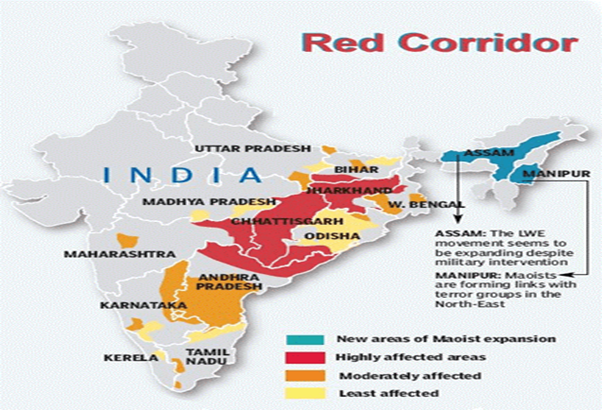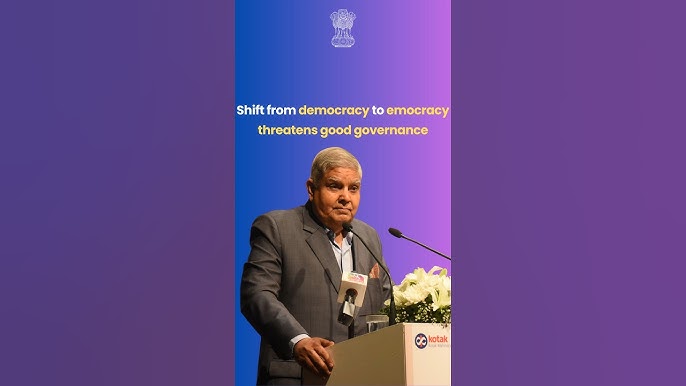- Courses
- GS Full Course 1 Year
- GS Full Course 2 Year
- GS Full Course 3 Year
- GS Full Course Till Selection
- Online Program
- GS Recorded Course
- NCERT (Recorded 500+ Hours)
- Polity Recorded Course
- Geography Recorded Course
- Economy Recorded Course
- AMAC Recorded Course
- Modern India, Post Independence & World History
- Environment Recoded Course
- Governance Recoded Course
- Science & Tech. Recoded Course
- International Relations and Internal Security Recorded Course
- Disaster Management Module Course
- Ethics Recoded Course
- Essay Recoded Course
- Current Affairs Recoded Course
- CSAT
- 5 LAYERED ARJUNA Mentorship
- Public Administration Optional
- ABOUT US
- OUR TOPPERS
- TEST SERIES
- FREE STUDY MATERIAL
- VIDEOS
- CONTACT US
Left Wing Extremism in Chhattisgarh
Left Wing Extremism in Chhattisgarh
29-04-2023

Latest Context
Recently, ten personnel of the Chhattisgarh Police’s District Reserve Guard (DRG) and the civilian driver of their vehicle were reported killed in an IED (Improvised Explosive Device) attack by Maoists in the state’s Dantewada district. The attack happened in Chhattisgarh after more than 2 years when 22 security forces personnel were killed by Maoists in April 2021.
Left-wing Extremism
Background
- Left-wing extremism (LWE) is a political ideology that advocates for radical socialist, communist, or anarchist ideas and is mainly characterized by the use of violence and terrorism as a means of achieving its goals.
- Another defining feature of this ideologue is to oppose capitalism, imperialism and the establishment of political and social order and seeks to establish a revolutionary socialist or communist state.
Targets
- LWE groups target government institutions, law enforcement agencies, or private property to advance their agenda.
- Due to its revolutionary nature, it is opposed by governments and law enforcement agencies, who consider it a threat to national security and stability.
Current LWE Situation in Chhattisgarh
- In India, Chhattisgarh is the only state where Maoists continue to have a significant presence and have the capability to launch big attacks. In the last 5 years (2018-22), Chhattisgarh has accounted for more than 1/3rd of all Maoist-related violence and had a lion’s share of 70%-90% of total deaths due to the same.
- Amongst all Maoist-affected states, Chhattisgarh continues to remain troubled. Through the active involvement of state police in Andhra Pradesh, West Bengal, Odisha and Jharkhand, the states were able to finish their Maoist problem.
- The absence of roads, infrastructure, connectivity, and minimal presence of the administration in Bastar has ensured that Maoists will continue to have influence in the region by enjoying local support.
Current LWE Situation in the Country
- As per the government, Maoist violence in the country has gone down by 77% since 2010. According to the Ministry of Home Affairs (MHA) the number of total deaths that includes security forces and civilians has decreased by 90% from an all-time high of 1,005 in 2010 to 98 in 2022.
- The influence of Maoists and associated violence has been come down consistently in the country due to multiple factors:
- Very strong actions taken by security forces in Maoist strongholds.
- Due to roads and infrastructure development and civic amenities, access to the interior has been possible up to a great extent that was absent earlier.
- Due to high disenchantment with the Maoist ideology among the youth this insurgent movement is losing its impact day by day.
Government Initiatives to Control LWE
- SAMADHAN doctrine: It is a one-stop solution for the LWE problem. It comprises the entire strategy of government from short-term policy to long-term policy formulated at different levels. This acronym SAMADHAN stands for:
- S- Smart Leadership
- Aggressive Strategy
- M- Motivation and Training
- Actionable Intelligence
- D- Dashboard Based KPIs (Key Performance Indicators) and KRAs (Key Result Areas)
- H- Harnessing Technology
- Action plan for each theatre
- N- No access to Financing
- National Policy and Action Plan in 2015: It consists of a multi-dimensional strategy comprising security measures, development initiatives, and ensuring the rights & entitlements of local communities.
- The Ministry of Home Affairs is supporting the state governments extensively by deploying Central Armed Police Force (CAPF) Battalions, provision of helicopters and UAVs, and sanctioning India Reserve Battalions (IRBs)/ Special India Reserve Battalions (SIRBs), etc.
- Financial assistance is being provided for the Modernization of the Police Force (MPF), Security Related Expenditure (SRE) Scheme, and Special Infrastructure Scheme (SIS) for the modernization and training of State Police.
- Financial assistance is also being provided for the development of most LWE-affected districts under the Special Central Assistance (SCA) scheme.
- Aspirational Districts Program: This program was launched in 2018 with an aim to rapidly transform the districts that have shown relatively lesser progress in key social areas.
- Greyhounds: Greyhounds was raised in 1989 as an elite anti-Naxal force.
- Operation Green Hunt: It was started in 2009-10 and a huge deployment of security forces was done in the Naxal-affected areas.
- Bastariya Battalion: In Chhattisgarh, the CRPF raised a Bastariya Battalion that recruits from local population who knew the language and terrain and could generate intelligence. This unit now has 400 recruits and regularly conducts operations in Chhattisgarh.
Challenges in Tackling LWE

- Wide Geographic Spread: The main defining feature of LWE groups is that they operate in remote and inaccessible areas; dense forests, hilly terrains, and where there is a lack of proper infrastructure that makes it very difficult for security forces to track them and gun down.
- Support of Local Communities: LWE groups are successful because they enjoy the support of local communities who feel neglected and marginalized by the government.
- Lack of Development: It comes to the notice that LWE-affected areas are underdeveloped, with inadequate access to basic amenities that creates fertile ground for extremist ideologies.
- Political Support: LWE groups often enjoy the support of certain political parties and leaders, who use them for their own interests making it very challenging for the government to take a strong stand against them without risking political backlash.
Way Forward
- Socio-Economic Development: The government needs to more focus on improving socio-economic conditions in areas affected by left-wing extremism like investing in infrastructure, creating employment opportunities, and providing better access to education and healthcare.
- Targeted Security Operations: The security forces are required to conduct targeted operations against LWE groups, using intelligence-based approaches and avoiding collateral damage.
- Rehabilitation and Reintegration: The government needs to have more focus on providing rehabilitation and reintegration support to former extremists who have renounced violence by providing them with education, training, employment as well as psychosocial support.




